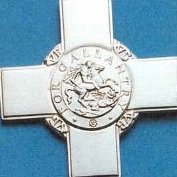Is this cable TV or Fiber Optic?
-
Recently Browsing 0 members
- No registered users viewing this page.
-
Topics
-
-
Popular Contributors
-
-
Latest posts...
-
3
Tourism Thailand’s Tourism Record: 2025 Sees Surging Traveller Numbers
Confusing every time.. Last week drop in tourists this week a surge...What is true and what can you believe of the Thai News??? I am sure they bend everything to make people feel happy and show how good the Government is... Reality is the opposite or less rosy -
1
-
28
THAILAND LIVE Thailand Live Saturday 19 July 2025
Mother Arrested After Abandoning Newborn on Roadside. Picture courtesy of Khaosod. A 32-year-old woman has been arrested after abandoning her newborn daughter in a rucksack on the side of a busy road in Samut Prakan province. The infant was discovered alive the following day, having survived exposure to heavy rain. Full story:https://aseannow.com/topic/1367193-mother-arrested-after-abandoning-newborn-on-roadside/ -
0
Crime Mother Arrested After Abandoning Newborn on Roadside.
Picture courtesy of Khaosod. A 32-year-old woman has been arrested after abandoning her newborn daughter in a rucksack on the side of a busy road in Samut Prakan province. The infant was discovered alive the following day, having survived exposure to heavy rain. The baby girl was found shortly after 07:30 on the 17 July, by a local resident collecting recyclables near the Khlong Bangkasi bridge in the Bang Pla area. Noticing a black backpack left suspiciously by the roadside, the man unzipped it and was shocked to find a newborn child inside. He immediately rushed the baby to his home and alerted police and emergency responders. Rescue teams from the Naruebodindra emergency unit and the Ruamkatanyu Foundation responded swiftly and transferred the child to Ramathibodi Chakri Naruebodindra Hospital. Miraculously, despite being left out overnight in harsh weather, the infant was reported to be in good health. Following the discovery, police launched an urgent investigation, reviewing extensive CCTV footage. Cameras captured a woman leaving a room in the Thai Prakan Village area of Bang Sao Thong at around 20:15 on 16 July. She was seen placing a backpack in the front basket of a motorcycle and later stopping on the bridge, where she left the bag before riding away. Officers from Bang Phli Police Station identified and detained the woman, named as Ms. Ploy, a native of Sisaket Province. She confessed to abandoning her baby, claiming she had concealed her pregnancy from her family and delivered the baby alone in her rented room. According to her statement, the child’s father had ended the relationship early in her pregnancy. “I used emergency contraception and we were careful, but I got pregnant anyway,” she reportedly told investigators. “I was terrified and didn’t want my family to know. I gave birth on my own on 16 July and cut the umbilical cord myself.” Ms. Ploy said she left the baby in a location where she believed someone would quickly find her, near where lorry drivers often park overnight. “I stopped and looked at her, told her I was sorry, but I couldn’t keep her. Then I went back to check from the other side of the road, but I’d already made up my mind.” The incident came as a complete shock to Ms. Ploy’s extended family. Her aunt told reporters the family had suspected she was pregnant, but Ms. Ploy had denied it, claiming weight gain. “We only found out the truth when we recognised her and the motorbike from news footage,” she said. The family now wishes to raise the baby themselves, though legal procedures are still ongoing. Police have charged Ms. Ploy under Section 306 of the The Criminal Code for abandoning a child under the age of nine. The offence carries a maximum penalty of three years in prison, a fine of up to 60,000 baht, or both. Authorities said her actions, while grave, do not meet the legal threshold for attempted murder due to the evident intent for the child to be found. Pol. Col. Pairoj Phetphloy, superintendent of Bang Phli Police Station, confirmed that officers acted swiftly on the case due to its seriousness and public concern. “We’ve handled this with urgency,” he said. “Fortunately, the baby is now safe and in care.” The case has triggered a debate about the need for better social services for single mothers and the stigma surrounding unplanned pregnancies. Adapted by Asean Now from Khaosod 2025-07-19 -
-
28
THAILAND LIVE Thailand Live Saturday 19 July 2025
Drunken Man Accidentally Shoots Wife in the Hip After Motorbike Hits Pothole Picture courtesy of Matichon. A 39-year-old woman is recovering in hospital after being accidentally shot in the hip by her husband, who was carrying a homemade gun while riding pillion on a motorbike. The firearm discharged when the vehicle hit a pothole, police said. Full story:https://aseannow.com/topic/1367192-drunken-man-accidentally-shoots-wife-in-the-hip-after-motorbike-hits-pothole/- 1
-

-
-
Popular in The Pub


.thumb.jpg.3ee24d9400fb02605ea21bc13b1bf901.jpg)
.thumb.jpeg.d2d19a66404642fd9ff62d6262fd153e.jpeg)








Recommended Posts
Create an account or sign in to comment
You need to be a member in order to leave a comment
Create an account
Sign up for a new account in our community. It's easy!
Register a new accountSign in
Already have an account? Sign in here.
Sign In Now